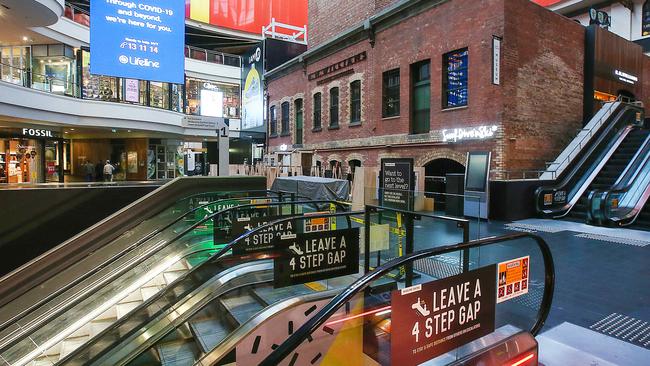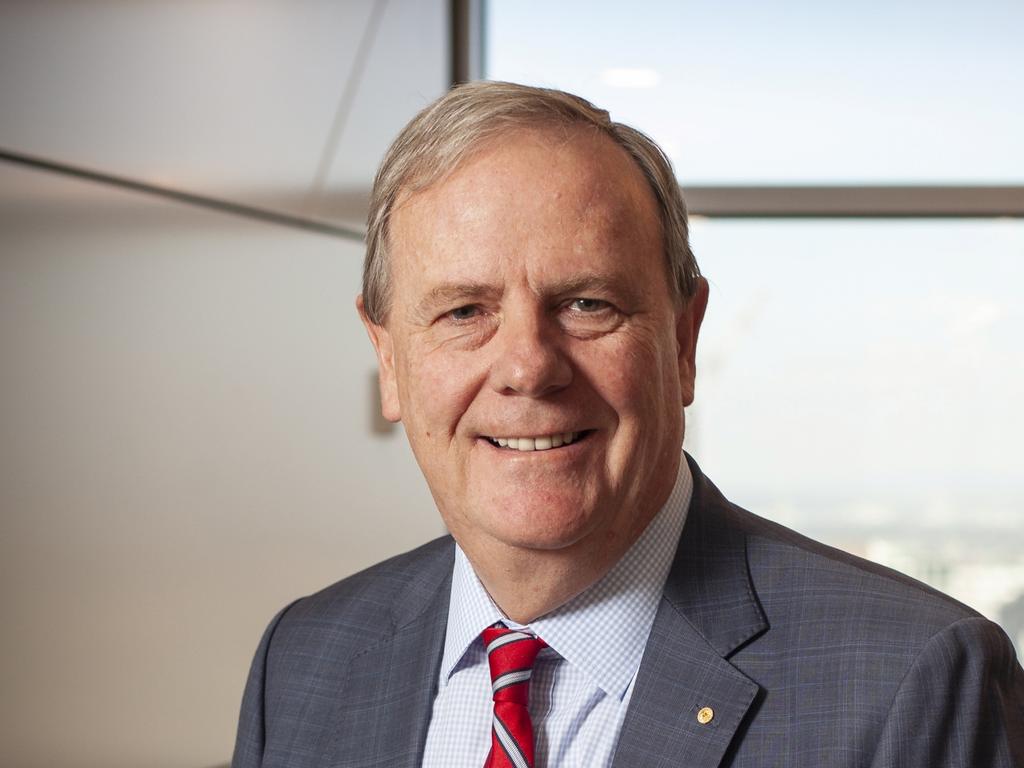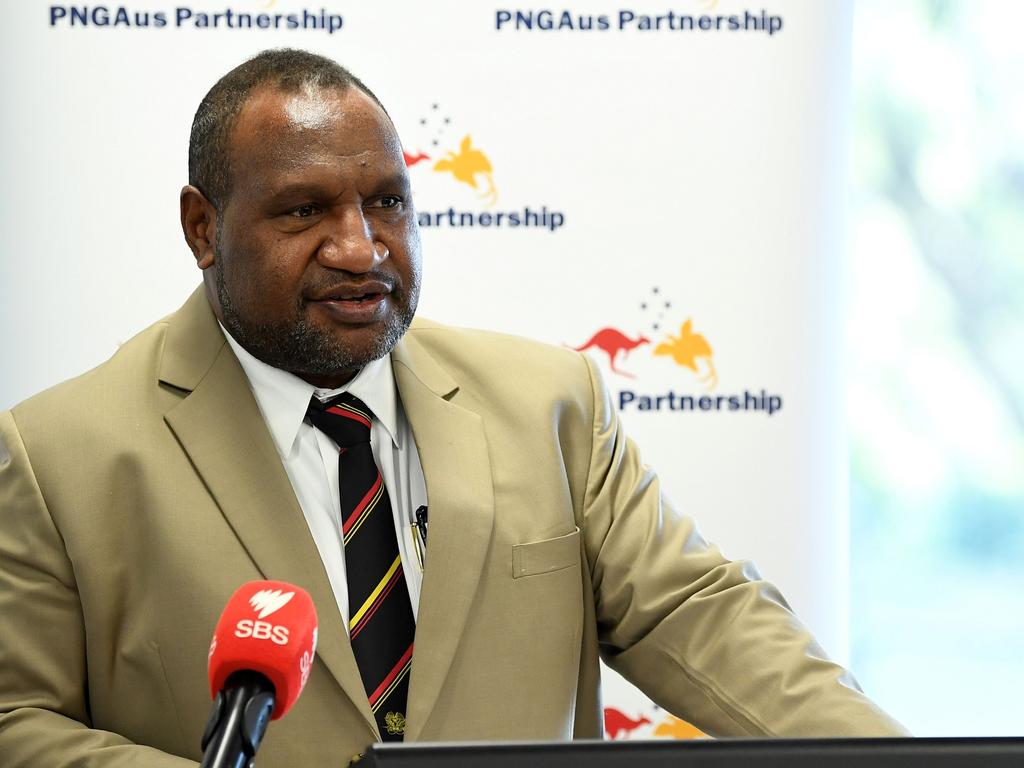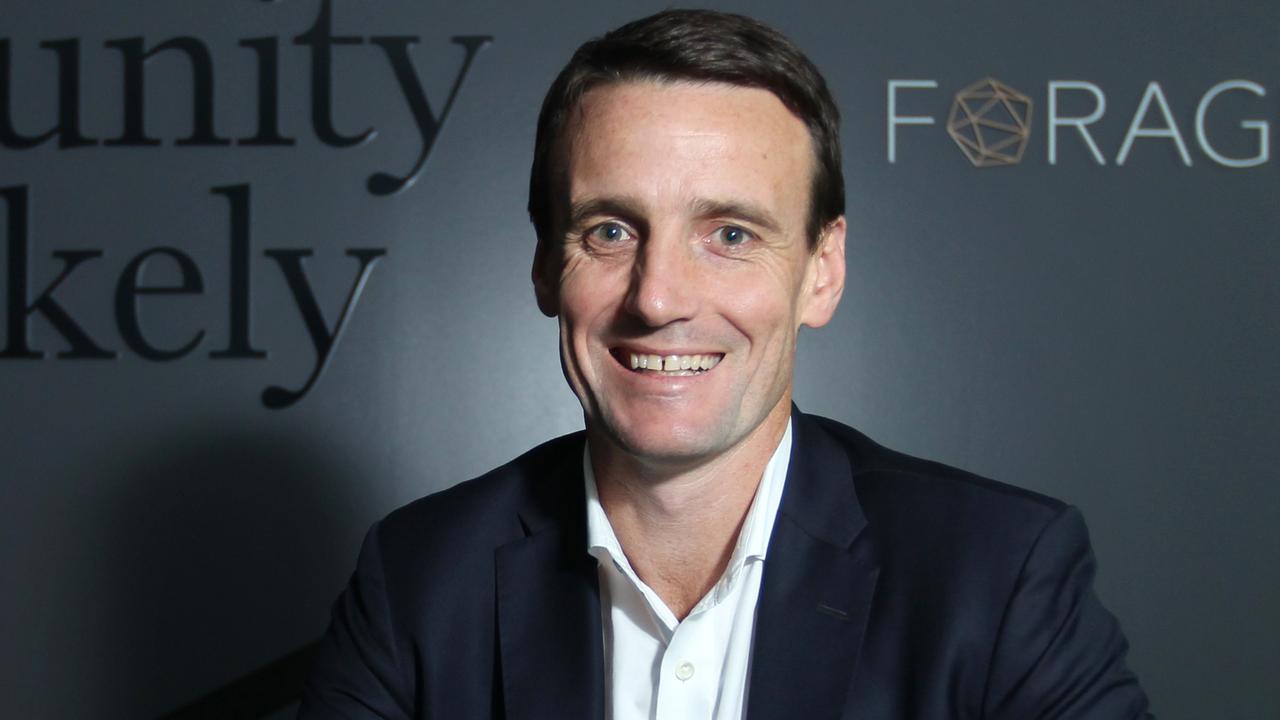
AMP Capital and Deutsche Bank economists said the RBA would cut the cash rate to a new record low of 0.1 per cent, from 0.25 per cent currently, while also saying significantly greater purchases of government bonds by the central bank were likely.
The October 6 federal budget is also expected to bring forward legislated income tax cuts and also offer new investment tax incentives to boost consumption and investment.
As border closures and social distancing requirements caused massive falls in services related to transport, accommodation and catering — while also depressing goods spending — household consumption fell 12.1 per cent in the June quarter compared to the March quarter.
The consumption slump accounted for 6.7 percentage points of a 7 per cent fall in economic output, confirming widespread expectations that official measures to limit the pandemic have caused the economy to experience its first recession since the early 1990s.
It was the biggest fall since quarterly records began in 1959.
Annual growth of minus 6.3 per cent was the worst since World War II.
While the national accounts data were considerably weaker than expected, the sharemarket bounced strongly, with the S&P/ASX 200 rising 1.8 per cent to 6063.2 points.
The dollar dipped to US73.37c after hitting a two-year high of US74.14c on Tuesday.
But with the resurgence of the coronavirus in Victoria, NSW and Queensland since late July triggering renewed border closures and extended “stage four” lockdowns in Melbourne, economists warned that the recession may continue in the September quarter.
“It is still uncertain whether this coronavirus-driven slump ended in the June quarter given that the lockdown in Victoria — worth 25 per cent of GDP — will be a big drag on activity,” said AMP Capital’s head of investment strategy and chief economist, Shane Oliver.
His forecasts assume another fall — albeit just 0.3 per cent — in the September quarter, given the stricter lockdown in Melbourne since early last month and the other restrictions across the rest of Victoria, implying that the current recession will drag on until the last quarter of 2020.
“After this low point in Australian GDP, which we think will be the September quarter, there will be a need to fill the growth pothole left by the COVID-19 pandemic so the pressure will remain on the Reserve Bank and federal and state governments to provide additional support to the economy to spur growth,” Dr Oliver said.
“Federally this is likely to come in the form of a ‘bring forward’ of income tax cuts and new investment tax incentives to boost consumption and investment, possibly in next month’s budget.”
Dr Oliver also expects the RBA to cut the cash rate 0.1 per cent in the months ahead, increase and broaden its bond-buying and adopt an even more dovish commitment to not raise rates until inflation is actually and sustainably back in the 2-3 per cent target band.
Deutsche Bank Australia chief economist Phil O’Donoghue said the slump in household consumption was six times worse than the next worst quarter — a 1.9 per cent fall in 1974.
“The gravity of these outcomes easily gets lost amid the distraction caused by the pandemic,” he said. “Nonetheless they are a testament to the unequivocally devastating economic cost of social distancing measures imposed to combat the virus.”
Moreover, even allowing for the disruption caused by Melbourne’s second lockdown from late July, Mr O’Donoghue said he was “increasingly concerned about the health of the economic recovery”.
“Setting Victoria aside, a rapid early rebound in employment through May and into mid-June has since lost steam,” he said.
“Nationwide, employment levels are around 4 per cent above their mid-April low-point, but still 5 per cent below pre-COVID-19 levels.”
Ahead of the national accounts data on Wednesday, Mr O’Donoghue changed his monetary policy forecasts to predict a further cut in the RBA’s cash rate and three-year bond rate targets to 0.1 per cent by February, from 0.25 per cent now.
He did not rule out cuts occurring before year end.
He said an extension of the RBA’s term funding facility after its policy meeting on Tuesday was “incrementally stimulatory, but increasingly at risk of not being enough”.
“Our issue with current policy settings relates to weak demand for credit,” he said.
“While the RBA governor thinks much of this weak demand is ‘price insensitive’ — driven by pandemic fears rather than interest rates — we are not as convinced.
“Even if it is price-insensitive, the longer it persists, the larger the negative output gap that policy will ultimately need to fill.”
An expanded quantitative easing (bond-buying) program, focusing on the five to 10-year part of the government bond curve, “looks increasingly possible”, he said.
And a negative official cash rate also “looks less improbable”, even though RBA governor Philip Lowe has repeatedly said it was “extraordinarily unlikely”.
“The RBA’s self-imposed hurdle to a negative policy rate is high, but it is not insurmountable,” Mr O’Donoghue added.
“Again, however, that remains outside of our baseline for now.”
But a massive household income boost due to government stimulus significantly boosted savings.
“Household incomes rose despite the recession and the collapse in the labour market,” Westpac senior economist Andrew Hanlan said.
Wage incomes fell just 2.5 per cent, but gross disposable income surged a “massive” 2.9 per cent in real terms and a spike in the household savings rate from 6 per cent to 19.8 per cent now provides households with a considerable buffer to draw upon in coming quarters, Mr Hanlan said.
AMP’s Dr Oliver said the slump was different to past recessions and the Great Depression because it was caused by government-mandated shutdowns of much of the economy, as opposed to a cyclical boom leading to a bust — which takes a long time to work through as excesses have to be unwound.
“This downturn was not preceded by a boom, unlike the recessions of the 1970s, 80s and 90s and there was nothing like the Roaring Twenties,” he said.







A collapse in spending by consumers in the June quarter has renewed calls on the Reserve Bank and state and federal governments to provide more stimulus to minimise lasting damage to the economy from the pandemic and associated shutdowns.